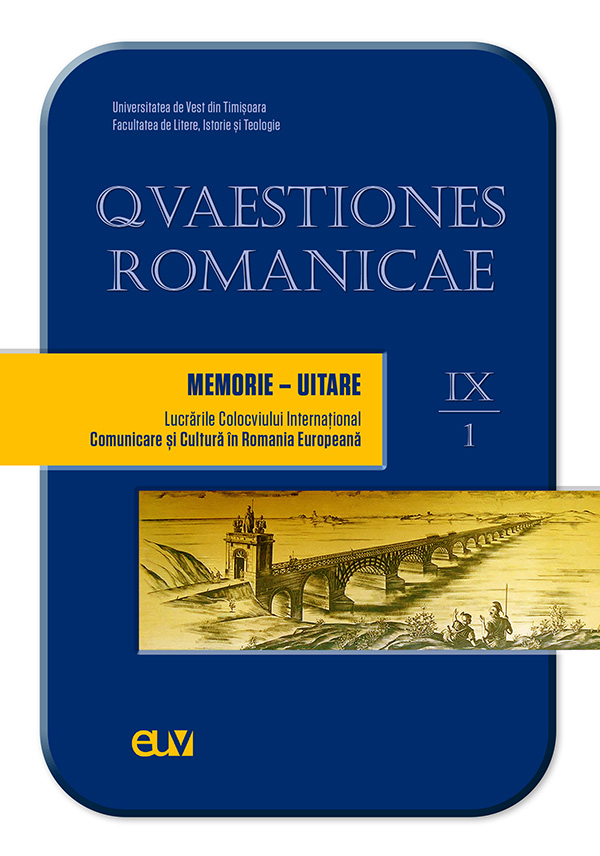Construction du temps mythique en tant qu’arme contre l’oubli dans l’œuvre de Sylvie Germain
Abstract: (Construction of mythical time as a weapon against oblivion in the work of Sylvie Germain) The present work focuses on ancient traditions and habits specific to the archaic world painted by Sylvie Germain as markers of a mythical time that awakens nostalgia for a heavenly time. The childhood spent with her grandparents in the Morvan permeates the imagination of the writer who, through writing, fights against oblivion, bringing out to the surface the rural universe where man lived in peace with nature and with God. First, the current analysis is based on the dichotomy made by Mircea Eliade between mythical time and historical time as the trigger for the nostalgia for the Golden Age. Then, on the theories of Maurice Halbwachs on collective memory and finally, on the distinction made by Henri Bergson between habitual memory and pure memory. Through habits and ancient traditions, Sylvie Germain achieved a real abolition of historical time describing the access to the illud tempus paradisiac which characterized the human species before the fall. She creates incredible "stories of memory", defined by Dominique Viart as the result of a pressing memory, arising from the unconscious, through powerful writing images, hypotyposis being the figure of choice.
Keywords: collective memory, myth, traditions, sacred time, Golden age.
Résumé : Le présent travail se concentre sur des anciennes traditions et habitudes du monde archaïque, peints par Sylvie Germain en tant que marqueurs d’un temps mythique qui éveille la nostalgie d’une époque paradisiaque. L’enfance passée chez les grands-parents, dans le Morvan, imprègne l’imaginaire de l’écrivaine qui, à travers l’écriture, lutte contre l’oubli, ressortant à la surface l’univers rural où l’homme vivait en paix avec la nature et avec Dieu. L’analyse actuelle s’appuie dans un premier temps sur la dichotomie faite par Mircea Eliade entre le temps mythique et le temps historique en tant que déclencheur de la nostalgie de l’Âge d’Or. Ensuite, sur les théories de Maurice Halbwachs sur la mémoire collective et, pour finir, sur la distinction faite par Henri Bergson entre la mémoire habitude et la mémoire pure. À travers d’anciennes traditions, Sylvie Germain réussit l’abolition du temps historique décrivant l’accès à l’illud tempus paradisiac qui caractérisait l’espèce humaine avant la chute. Elle crée des « récits de mémoire » inouïs, définis par Dominique Viart comme le résultat d’une mémoire pressante, surgie de l’inconscient, à travers des images d’écriture puissantes ; l’hypotypose en est la figure de prédilection.
Mots-clés : mémoire collective, mythe, traditions, temps sacré, Âge d’Or.
